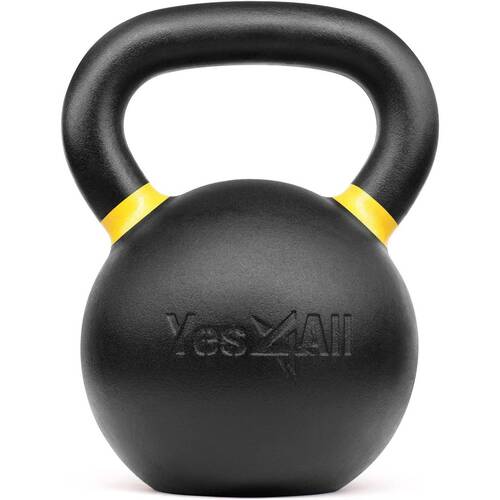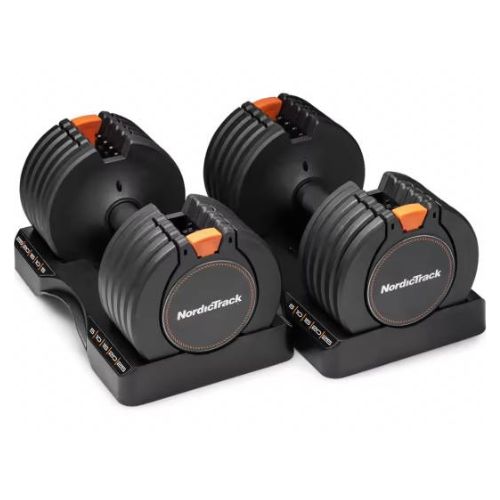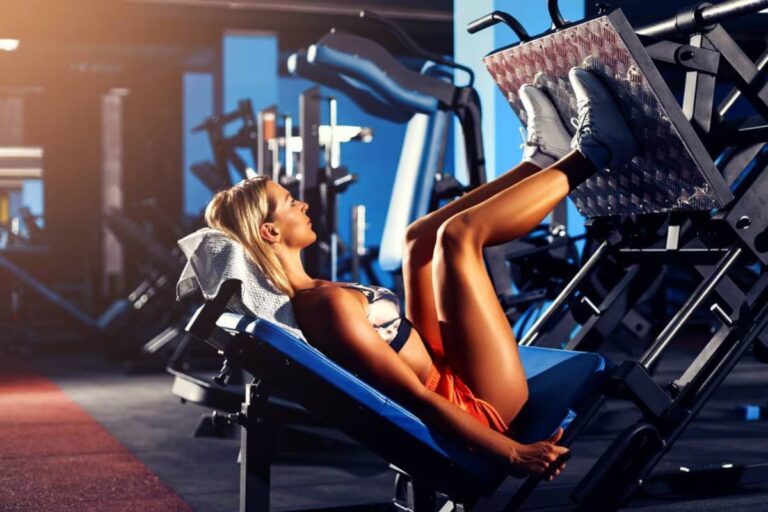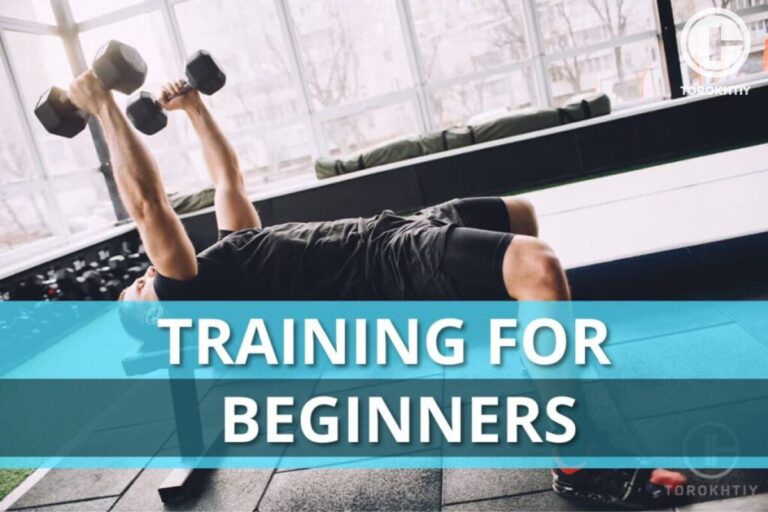Kettlebells vs Dumbbells – Which Piece of Equipment is Better?
When it comes to kettlebells vs dumbbells, most people automatically assume that the latter is a lot better since it’s more often used. After all, in most commercial gyms, you see rows and rows of dumbbells, while the selection of kettlebells is much smaller.
With that said, deciding which one to select to utilize often depends on the kind of workouts you want to do and the goals you have with your training. In this short article, we will be talking all about when you should choose kettlebells or dumbbells, which one of the two pieces of equipment is more useful depending on the type of training session, and the main difference between kettlebells and dumbbells.
Kettlebells vs Dumbbells – Which One Should You Choose? Kettlebells vs Dumbbells – both are terrific fitness tools, and which one you choose depends on your goals and your training style. For muscle building and pure strength, the dumbbells are a better option. On the other hand, for explosiveness and stability, the kettlebells take the lead.
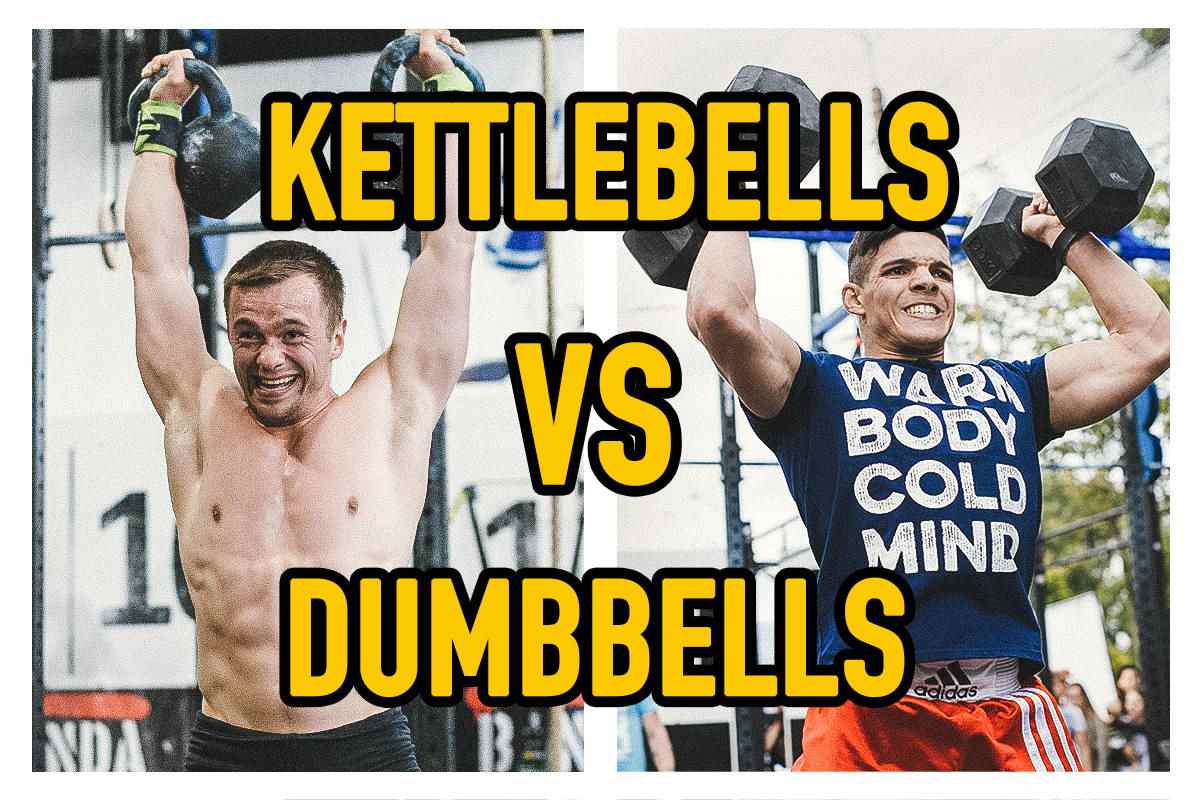
What is a Kettlebell?
Kettlebells are an easily recognizable piece of gym equipment. They can be described as cannonballs with a handle or as a ball with a flat base connected to a handle. Usually, they’re made out of sturdy materials such as cast iron or cast steel. Similarly to dumbbells, they’re an accessory that can often be seen in all sorts of gyms – from commercial ones to fitness affiliates. Thanks to their unique shape, kettlebells are extremely effective for many different types of workouts. The fact that they have an odd center of gravity requires you to use your stabilizing muscles whenever you’re performing even the most common exercises.
Another great thing with kettlebells is their versatility – they can be used for cardio-like sessions, which help you burn tons of calories quickly. Alternatively, they can be utilized for strength training. Because they have so many use cases, kettlebells are often preferred for home gyms, as people see them as a piece of fitness equipment that allows them to do many different kinds of training.
Additionally, people often ask the question, “can I use kettlebells in place of dumbbells” and the answer is sometimes. In fact, for almost all exercises, the kettlebell can replace a dumbbell, but that will lead to a slight change in the focus of the workout.
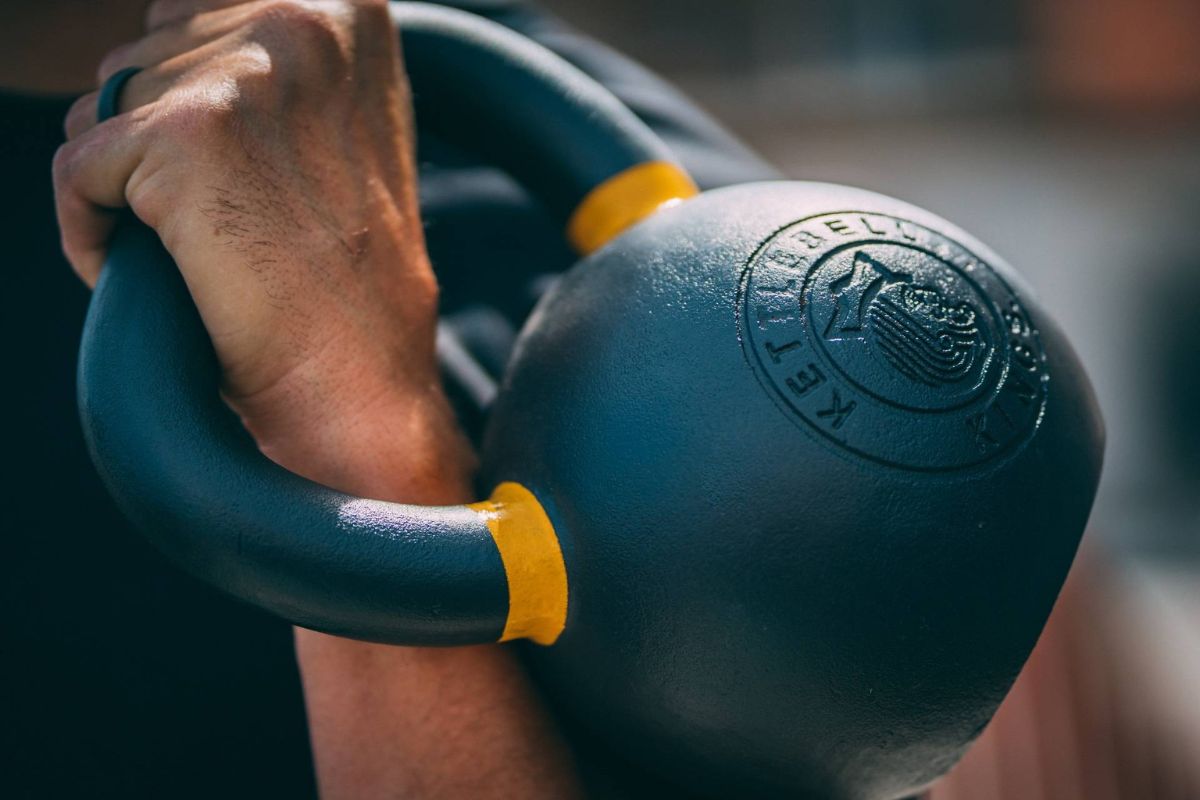
Our Recommended Kettlebells – Yes4All Skull/Powder Coated Cast Iron Competition Kettlebell
As with almost all pieces of gym equipment, there’s quite a lot of variety on the market. And so, choosing which kettlebells can be a difficult decision to make, as there are many great firms out there. When it comes to our recommendation, we’ve chosen to go with the kettlebells from Yes4All.
They’re competition-level kettlebells made out of high-quality cast iron and have no seams or weak spots. Their special powder coating allows you to get a better grip and ensures that they will remain non-slippery regardless of how sweaty your palms get. Additionally, they come in a variety of weights so that you can find the ones that suit you and your strength levels best.
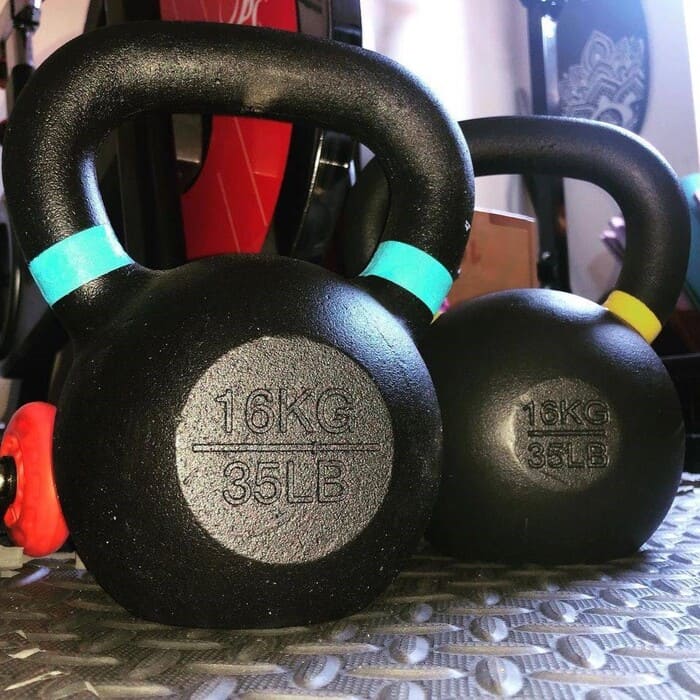
What Is a Dumbell?
It will be difficult to have a debate on dumbbell vs kettlebell without first talking about what both of these gym accessories separately. As we already discussed kettlebells, let’s now move on to the dumbbells.
If you’ve ever worked out in a gym, you’ve seen rows of dumbbells, all of different weights, and usually paired together according to how much they weigh. One can say that dumbbells tend to look like small loaded barbells, and they’re typically made out of some type of sturdy material – cast iron or steel. However, lighter-weight dumbbells are sometimes made out of specific types of plastic as well. The dumbbell is one of the most versatile gym tools out there, and it can be used for various exercises and all sorts of workouts, which is why it’s considered a must-have staple. Along with that, there are many different variations of dumbbells – some weigh a particular amount that can’t be changed (the ones that you usually see on the rows of gyms) and ones that can have their weight altered (either by adding or removing plates or automatically using new technology). What kind you choose to get usually depends on the use case and also on how much money you’re willing to spend.
Similarly to kettlebells, dumbbells also tend to be super versatile and can be used for both strength and cardio-style training sessions.
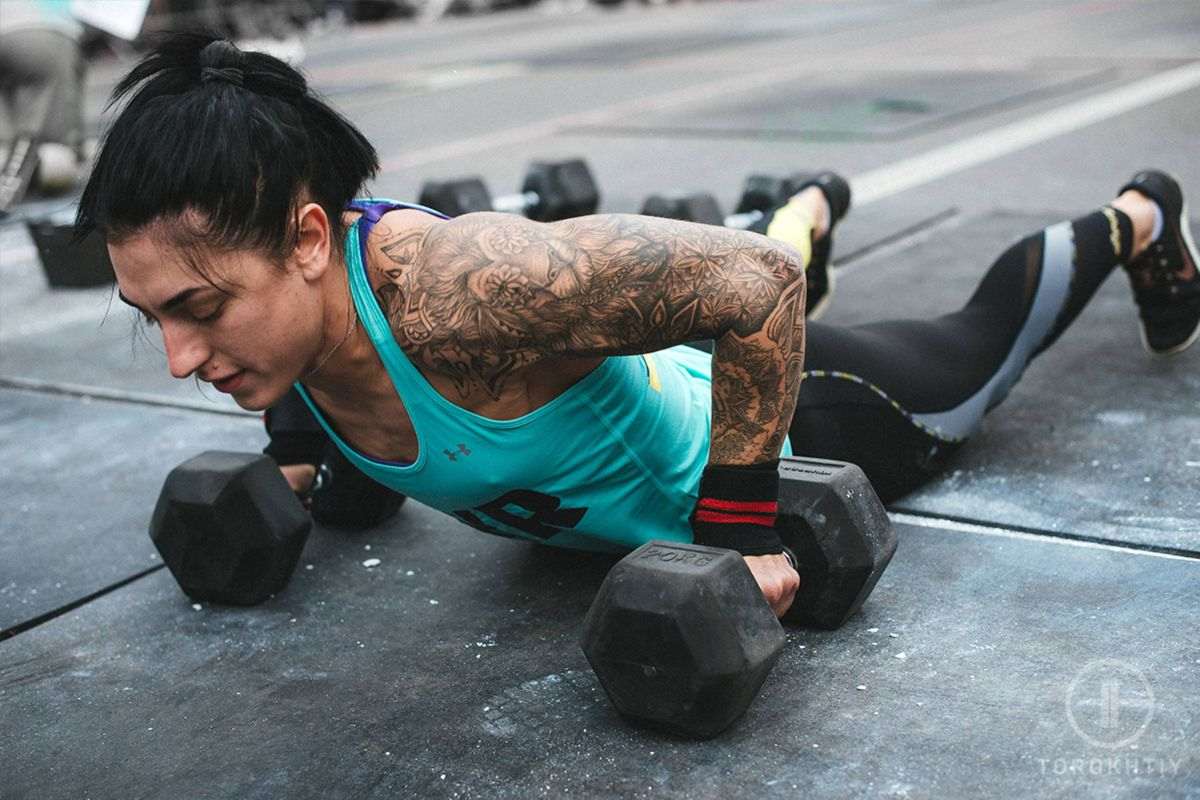
Our Recommended Dumbbells – NordicTrack Dumbbells
As we mentioned, many different types of dumbbells are on the market. However, the ones we picked are mostly a great option for those of you that want to be able to work out effectively from home. The NordicTrack Dumbbells are a set of dumbbells that have changing weights, and you can choose up to 15 weight increments per dumbbell – saving you loads of space at home.
They come with two trays on which you can play them, and you can choose to move up in weight either by 2.5 or 5-pound increments, and the choice starts at 10 pounds and ends at 55. Along with that, with the dumbbells, you can use the iFit app, which gives you access to instructor-led workouts that you can do, in case you lack a particular fitness plan.
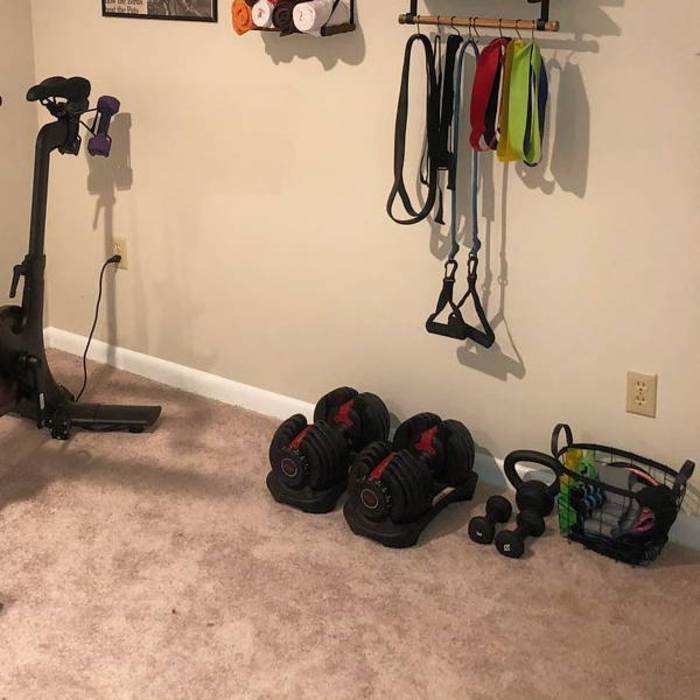
Kettlebells vs. Dumbbells
“Are kettlebells better than dumbbells?” is a question we hear more and more often. However, its answer is not as simple or as straightforward as we would like it to be. The most basic is that the type of equipment you choose entirely depends on the training you plan to do. But in order for you to be able to fully understand when you need to use one tool and when the other, we first have to take a look at the few key differences between them.
1. Different Weight Placement
With kettlebells, the weight is mainly in the body, meaning it sits below the handle. On the other hand, when it comes to dumbbells, the weight is evenly displaced on both sides. Why does that matter?
Well, when you do various exercises, the center of mass is something important because it can shift the stress of the load being put on the desired joint or muscle when performing any exercise. For example – doing a shoulder press with a dumbbell and doing it with a kettlebell feels totally different. That’s because the center of mass affects the exercise’s so-called strength curve (that’s how an exercise’s difficulty changes throughout the entire range of motion). And so when you want to isolate one muscle (like during a bicep curl), the dumbbell is the far better choice. On the other, if you want to work on not only one particular muscle, but also stabilization and range of motion, the kettlebell is the better choice.
2. The Handle
When it comes to kettlebells, their handle allows you to use them either with one or with both of your hands. However, you can mostly use one hand for one dumbbell with dumbbells. This general difference makes the kettlebell the better choice for some exercises, such as the kettlebell swing.
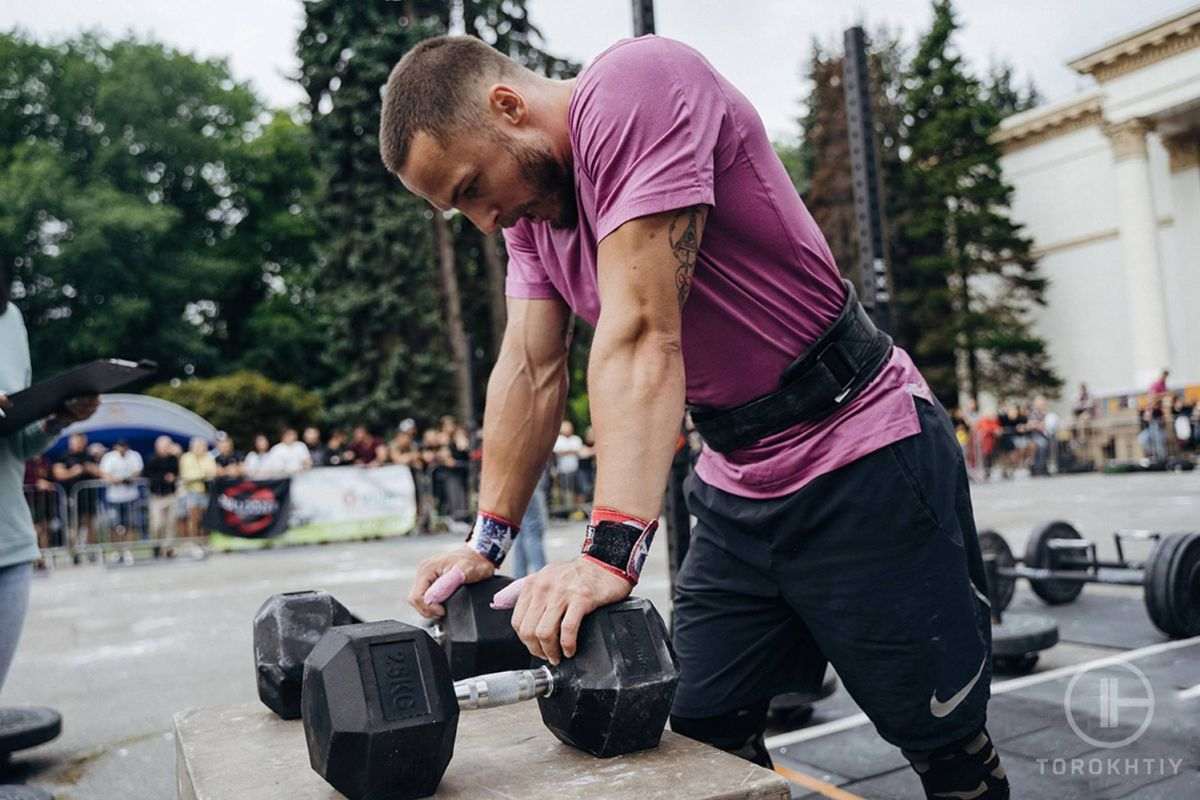
3. The Construction
Kettlebells are made either of cast iron or of cast steel, and their weight usually cannot be changed. If you want to be able to use various weights of kettlebells, you will need just to purchase them. Now there are some new variations of kettlebells with adjustable weights, but they’re not that easy to find and are typically more expensive. On the other hand, the construction of dumbbells can be different. Some are made of cast iron, others of PVC – some are made so that you can use weighted disks and alter the weight, while others have a more automatic system for weight-changing. Typically, when it comes to home gyms, dumbbells tend to be a preferred choice because you can buy one with changeable weight and use them for various exercises, which not only costs less but also takes up a lot less space.
When to Use Kettlebells vs. Dumbbells In a Workout
As we mentioned at the start, which tool you choose to use depends mainly on the type of workout you’re planning to do and the goals you’re striving to achieve. For example, if your primary target in the gym is to gain more strength and you’re working towards hitting particular numbers, then your obvious choice would be to go for dumbbells for most exercises.
On the other hand, if your goal is to train for explosiveness and power, then kettlebells are the better option depending on the movement. Not only can you perform more exercises with them, but they’re a lot more effective in challenging your explosiveness and stability in complex movements.
Exercises Can Be Performed with Both
Having said that, most exercises can be performed with both dumbbells and kettlebells. The only thing that changes when you swap between the two tools is the kind of stress you put on your joints and muscles when performing the movement. In order to help you get a better understanding, let’s take a look at a few exercises you can do with both dumbbells and kettlebells.
1. Dumbbell/Kettlebell Snatch
The snatch is a must-do exercise for most athletes, and it has been part of athletic programs for decades. And although the classic movement is performed with a barbell, the slight variations with dumbbells or with kettlebells are also a good choice. Typically, the dumbbell snatch is considered to be a less technical movement because the handle doesn’t rotate while in hand, and it can’t cause torn calluses or bruised wrists. On the flip side, the kettlebell snatch activates the chain posterior due to the backswing.
To perform a kettlebell snatch, you have to:
- Stand with your feet wider than your hips.
- Hold the kettlebell with both hands.
- Then bend your hips back and your torso forward while keeping the kettlebell close to your inner thighs.
- From there, bring your hips forward and then up; following that movement, do a high elbow pull to send the kettlebell overhead.
- When the kettlebell is over your head, lock your hips, elbows, and knees and maintain your posture.
Doing a dumbbell snatch is quite similar, but there are slight differences:
- With your feet hip-width apart, place the dumbbell between them.
- Roll your shoulders back and down while pulling your shoulder blades toward the center of your spine. Press your hips back and keep the spine long.
- Bend at the knees as needed so you’re able to reach the dumbbell.
- Grab the dumbbell with one hand, engage your core, and swing the arm upward until the kettlebell goes over your head.
- Once you’re in that position, again, lock the knees, hips, and elbows and maintain the pose.
2. Dumbbell/Kettlebell Squat
The squat is yet another must-do exercise that can be performed with both dumbbells and kettlebells. Here, the difference between the two moves is tiny, as the squat is a movement that mainly targets the muscles of your lower body.
To do either a kettlebell or a dumbbell squat, you have to:
- Grab one of the tools at the appropriate weight.
- Stand with your feet slightly wider than your shoulders.
- Then grab the dumbbell/kettlebell with both hands (when it’s a dumbbell, grab one of the heads) and keep it in front of your chest.
- From there, squat down until your knees are parallel with your toes, and then return to starting position.
3. Dumbbell/Kettlebell Overhead Press
The dumbbell/kettlebell overhead press is the last exercise on this list. And this time, there’s a difference in the muscles you’re activating when choosing to do the movement with one of the tools. If you do the overhead press with a kettlebell, you won’t only target the muscles in your shoulders, but also all of their stabilizers, as the center of mass is slightly different. Along with that, you will need to engage your core more, as the slightly unbalanced weight of the kettlebells makes it more challenging to keep it straight throughout the movement. On the flip side, if you perform the same exercise with a dumbbell, you will be isolating the muscles in your shoulder blades, and you won’t need to engage your core or the stabilizing muscles as much.
To do this exercise, you have to:
- Stand with feet shoulder-width apart and take one of the tools.
- From there, lift it till it’s about shoulder height and press up until the weight is over your head.
- Slowly lower the way down to starting position and repeat again.
How to Decide What to Choose
In order to be able to decide which one to choose, you need to ask yourself several questions. If you’re choosing a tool for your home gym, then dumbbells are probably the better option, as they’re more versatile and also allow you to change weight quickly and without taking up additional space. On the other hand, if you want to challenge your stability, joint mobility, and core – kettlebells are likely to do that more often, as the way the weight is balanced proposes a particular challenge. As you can see, which one of these tools you choose to use depends on your circumstances and your training goals.
FAQ
Is a Kettlebell Better Than a Dumbbell?
It’s not better, nor is it worse; it’s just different. Doing all kinds of movements with kettlebells typically targets not only one muscle, but also all of its stabilizers, and it also engages your core more.
Can Dumbbells Replace Kettlebells?
Technically, yes. However, performing the same exercise with kettlebells and with dumbbells will never feel the same way, as they engage your muscles in a different way.
Should I Squat With a Dumbbell or Kettlebell?
You can squat with both, and the difference won’t be too significant, as the squat is a movement that primarily targets your lower body muscles.
Do You Buy Dumbbells or Kettlebells First?
If you’re building a home gym, it’s a better idea to buy dumbbells first. Not only are they more versatile, but also some of the new models on the market allow you to change between different weights semi-automatically and without taking up too much space.
Conclusion
Both kettlebells and dumbbells have their place in your training sessions. These two pieces of equipment challenge your body in different ways and, when used correctly, can help you become a better athlete overall. Having said that, dumbbells remain the more versatile piece of equipment, and so if you’re building your own gym, they’re probably the first things you should get. Before we part ways, we’d like to hear your opinion on which one is better – dumbbells or kettlebells. Let us know in the comments below.
Also read:
- Best Olympic Dumbbell Handles
- How to Add Weight to Dumbbells
- Best Cheap Adjustable Dumbbells
- Best Heavy Adjustable Dumbbells
- Best Cast Iron Dumbbells
- Bowflex Select Tech 1090 Reviews
- Flybird Adjustable Dumbbells Review
- Best Dumbbell Brands
- Urethane Vs Rubber Dumbbells
References:
- What to Know About Kettlebells // Webmd: https://www.webmd.com/fitness-exercise/what-to-know-about-kettlebells
- What Exactly Is the Posterior Chain and Why Do Trainers Keep Talking About It? // SHAPE: https://www.shape.com/fitness/tips/what-is-posterior-chain-exercises
- HIIT (High Intensity Interval Training) // Harvard: https://www.hsph.harvard.edu/nutritionsource/high-intensity-interval-training/
- What to Know About Dumbbells // Webmd: https://www.webmd.com/fitness-exercise/what-to-know-about-dumbbells
- Why The Kettlebell Is The Ultimate Piece Of Athletic Equipment // Medium: https://medium.com/in-fitness-and-in-health/why-the-kettlebell-is-the-ultimate-piece-of-athletic-equipment-13000e826fb8
Why Trust Us?
With over 20 years in Olympic Weightlifting, our team does its best to provide the audience with ultimate support and meet the needs and requirements of advanced athletes and professional lifters, as well as people who strive to open new opportunities and develop their physical capabilities with us.
By trusting the recommendations of our certified experts in coaching, nutrition, dietology, and sports training programming, as well as scientific consultants, and physiotherapists, we provide you with thorough, well-considered, and scientifically proven content. All the information given in the articles concerning workout programming, separate exercises, and athletic performance, in general, is based on verified data. We ensure that you can rely on our professionals’ pieces of advice and recommendations that can be treated as personalized ones which will benefit you and fully meet your needs.
The product testing process is described in more detail here
Author: Ihor Shymechko
Pro Olympic Weightlifter, Coach
Best Results: Snatch – 208 kg,
C&J – 240 kg
Ihor has been a professional weightlifter since 1996, boasting over two decades of competition experience. His notable achievements include clinching the European Championship in 2009 and securing a silver medal in the 105kg division at the Senior World Championships in 2011. Ihor represented his country in the 2008, 2012, and 2016 Summer Olympics. After retiring from competitive weightlifting, he transitioned to coaching, leveraging his vast experience to guide athletes who now compete on both national and international stages.

